
What are the best practices top tech companies use to recruit top talent? Discover the most prominent examples of advantageous recruiting strategies top tech companies employ in their hiring and learn how to implement them in your company.
What are the best practices top tech companies use to recruit top talent? Discover the most prominent examples of advantageous recruiting strategies top tech companies employ in their hiring and learn how to implement them in your company.
If you are reading this article, you are probably in desperate need of great tech talent to fill your open job positions. It seems that everyone is struggling to recruit tech talent these days. We keep hearing about the tech talent shortage plague.
➡️ According to the latest Stack Overflow Developer Survey 2019, which surveyed 90,000 developers around the world, only 6.4% of developers are currently unemployed and looking for a job! 😲
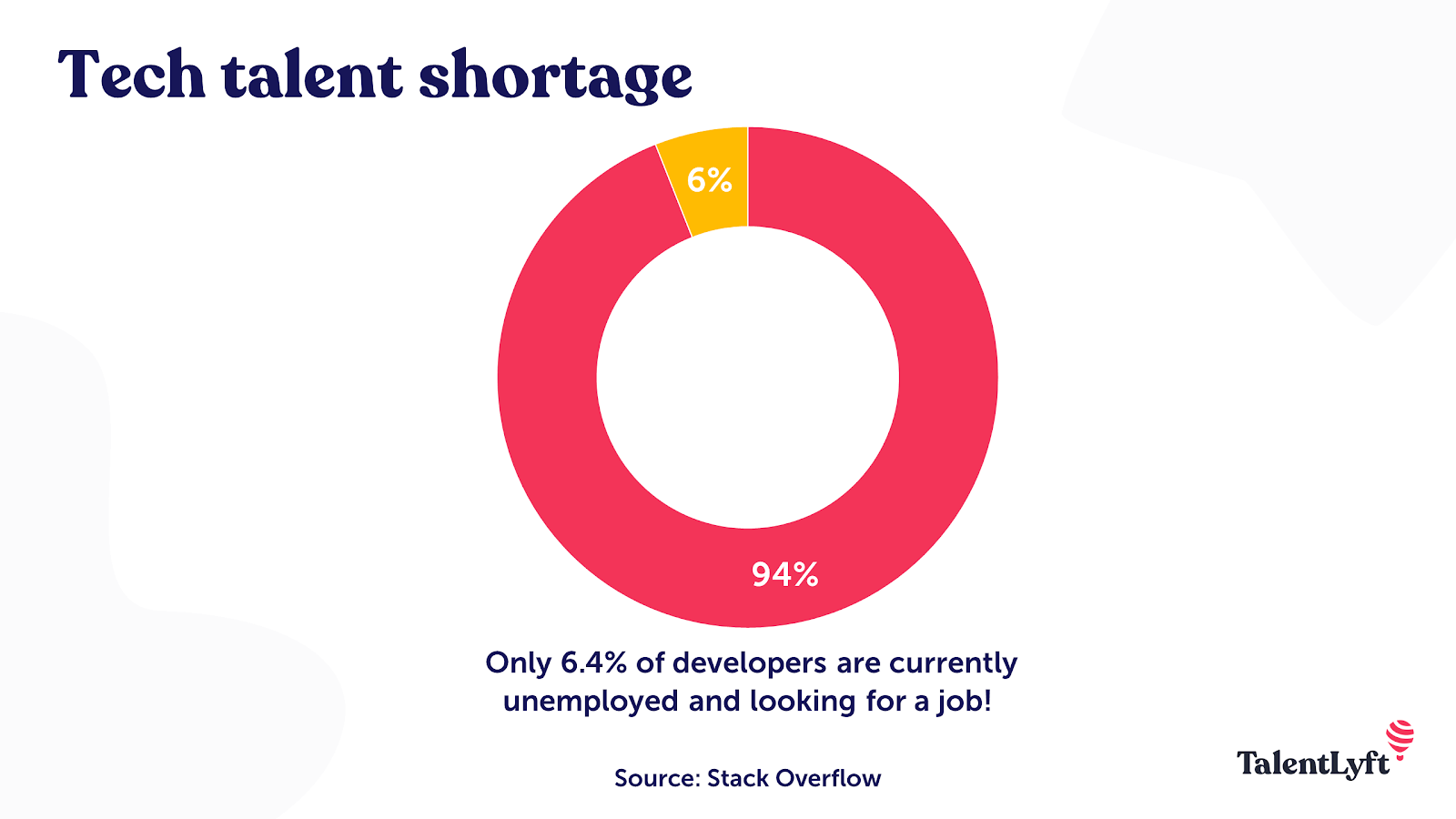
This is why almost 9 in 10 HR professionals (86%) say they find it challenging to find and hire technical talent, with over a third (36%) saying they find it “very” challenging, as reported in a recent Indeed survey.
If you are among them, this blog post is for you. 🙂
So how can you win in this tech talent war? 🤔
Especially if your organization isn’t a big, famous tech company like Google, Facebook, Apple or Microsoft with an established brand and unlimited resources?
This may seem like a mission impossible - but it is not. There is a way! 🙂
Actually, there are a few effective recruiting strategies that can help you address and successfully overcome the challenges in hiring tech talent.
➡️ In this blog post, I’ll share some of the most effective recruiting strategies used by top tech companies to attract, recruit and hire top tech talent.
And don’t worry - you can implement them even without large financial cost and a ton of time. All you need are my proven tips and tricks for recruiting tech talent. 💪
So without further ado, let’s take a look at the top 5 recruiting strategies used by the leading tech companies! 🧐
If you want to hire top tech talent, try one of these highly effective recruiting strategies used by top tech companies:

There is one thing tech companies do that makes all the difference in the world for recruiting. They don’t rely solely on their HR professionals and recruiters to find great candidates. Instead, they turn all of their existing employees into recruiters!
➡️ They do that by implementing a structured employee referral program. This means that they don’t simply ask their employees to tap into their social networks and recommend great tech candidates. You’re probably doing that too.
Do you also offer great employee referral awards? 🎁 And I don’t mean just bigger bonuses. Actually, Google tried offering larger bonuses and found that approach to be unsuccessful.
But they didn’t give up trying to get more referrals and they finally found the winning method. What proved to be the tactic that worked best for Google? 🤔
💡 Here is their well-kept secret: Google used a so-called “nudging approach” to engage their employees and get more referrals. They also hold regular “sourcing jams” where a group of approximately 25 Googlers would comb through their LinkedIn and Facebook contacts with recruiters waiting on standby.
Have you tried that? 🙂
Top tech companies know how to make an offer that top tech talent can’t refuse. Yes, they can offer a competitive paycheck - but this is not what makes their offer irresistible.
What makes their offer stand out is the fact they offer additional perks and benefits that tech candidates really care about.
You can also make your offer more competitive if you listen carefully to what your employees and potential candidates really want. Your employee value proposition is more than just money.
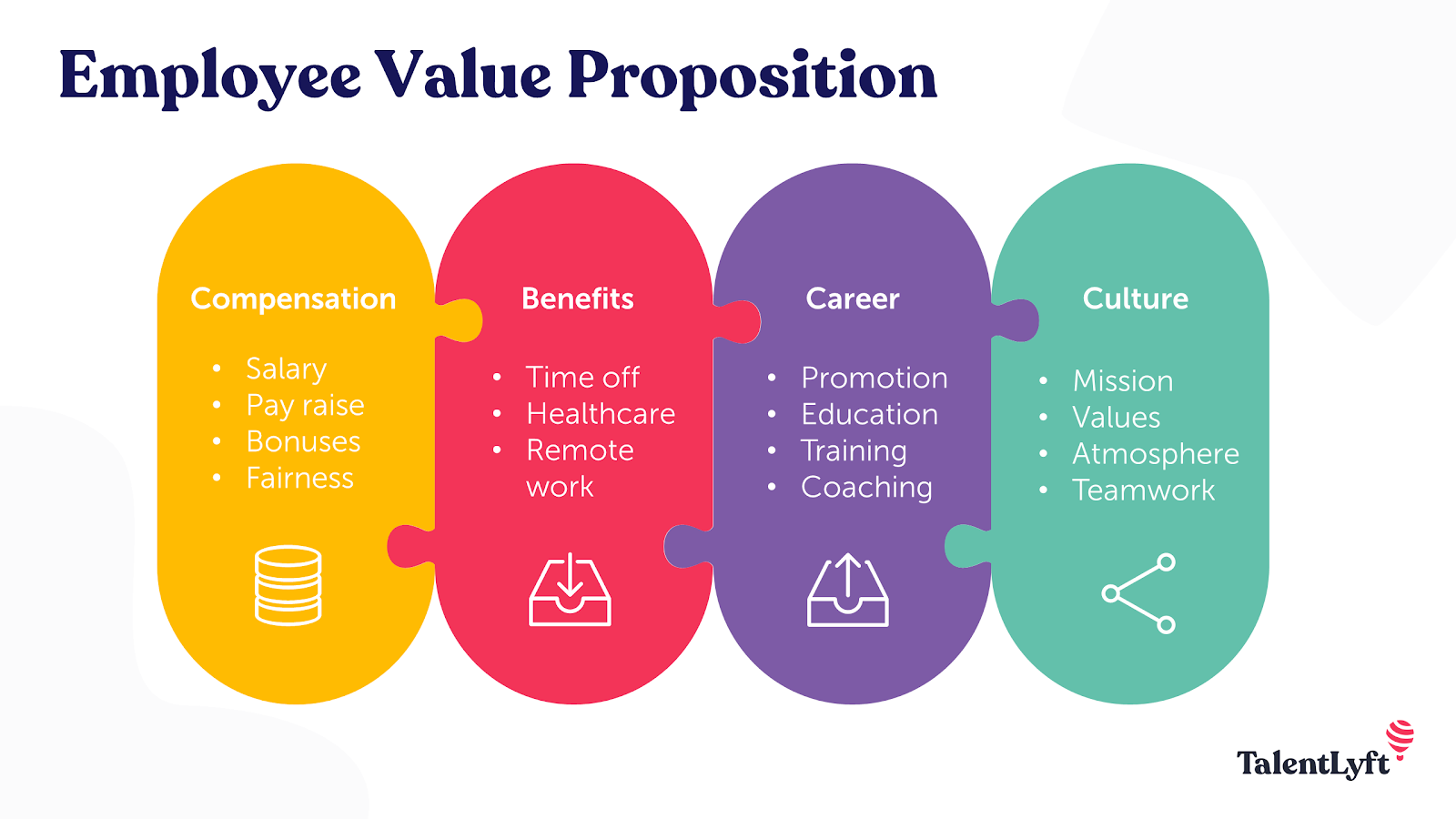
What else could make a great tech candidate choose your company over some of your competitors? 🤔
To find out, start with your employees. 🎤 Ask your employees, especially recent hires, why they chose your company.
The benefits you take for granted and not worth mentioning may be the reason that high performing tech professionals choose your company.
💡 Additionally, keep up with the latest research and data-driven insights into tech talent wants and needs:
According to recent research conducted by Codility, a majority (55%) of developers say that professional development is the most important factor for choosing an employer.
Regarding benefits, a recent survey conducted by Dice found that two things topped the list for tech job seekers: great healthcare benefit and the ability to work remotely.
Top tech companies regularly organize recruiting events for their target group - top tech talent. So do many other companies. But what sets these industry leaders apart? 🤔
🎯 Their secret is on organizing events that are attractive and interesting to their target group - top tech talent.
Top tech talent usually aren’t interested in visiting standard recruiting events such as career fairs, open days, etc. They are not looking for a job - they get at least a dozen great offers daily, just through LinkedIn.
What they look for is an opportunity to learn and share their skills and knowledge within their professional community. Top performers also like a great challenge.
This is why top tech companies regularly organize coding challenges and workshops, hackathons, bootcamps and tech meetups.
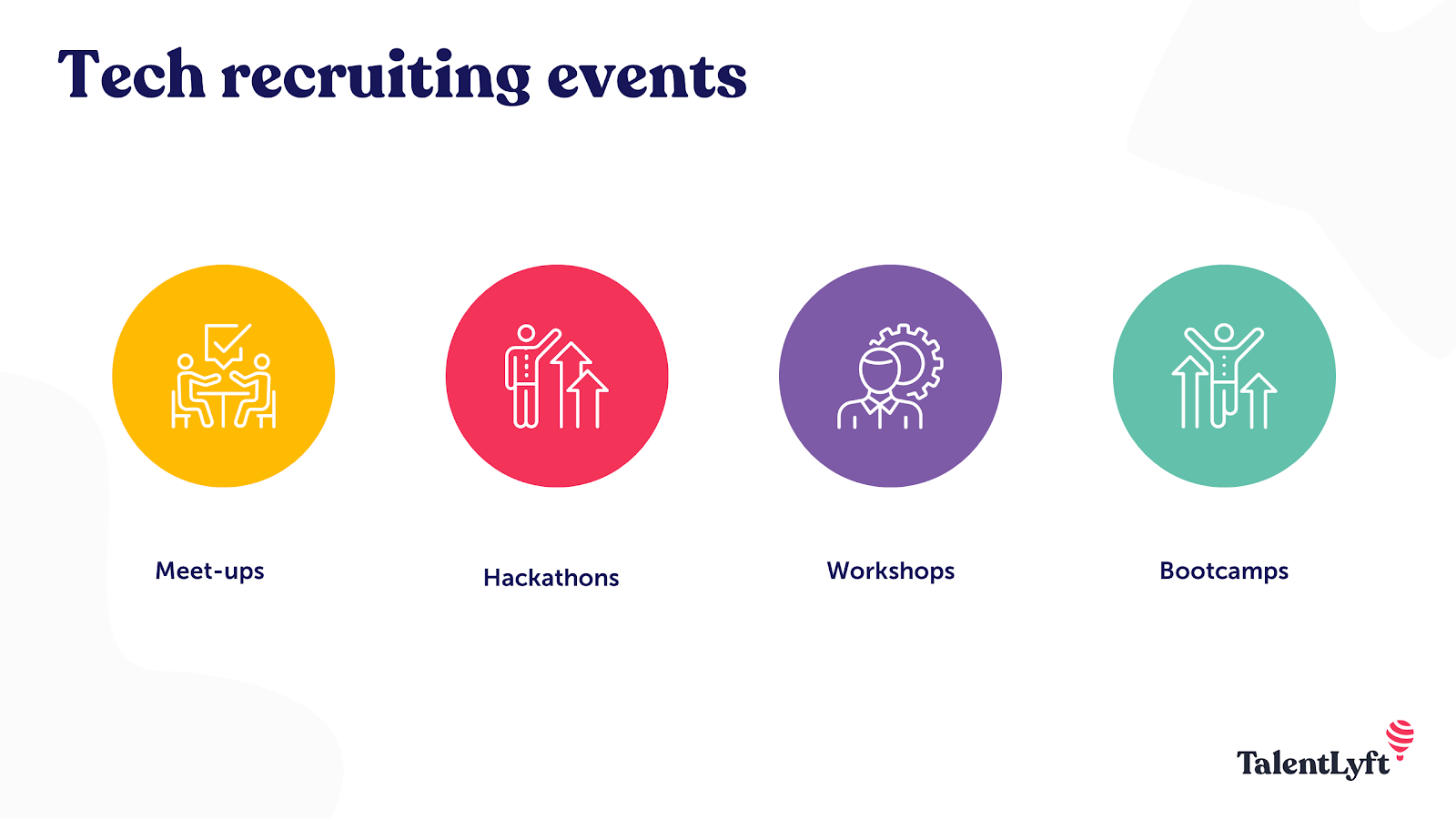
💡 According to Facebook executives:
Without its regular hackathons, Facebook wouldn't be Facebook at all.
They organize them both for their employees and their potential candidates. So should you!
Most companies work really hard to attract top tech talent. Once they finally get top tech candidates to apply for their open positions, they celebrate and think that they have nailed the hardest part.
But this is where they make a fatal mistake! ⚠️
Getting top tech candidates interested enough to come to your job interview is just half of the job. This is where the real game begins!
In order to get top-tier IT talent to accept your job offer, first you need to provide an outstanding interviewing experience and sell the job.
Top tech talent are sought after candidates and typically engage in the interview process to narrow their list of companies they’ll feel comfortable working for.
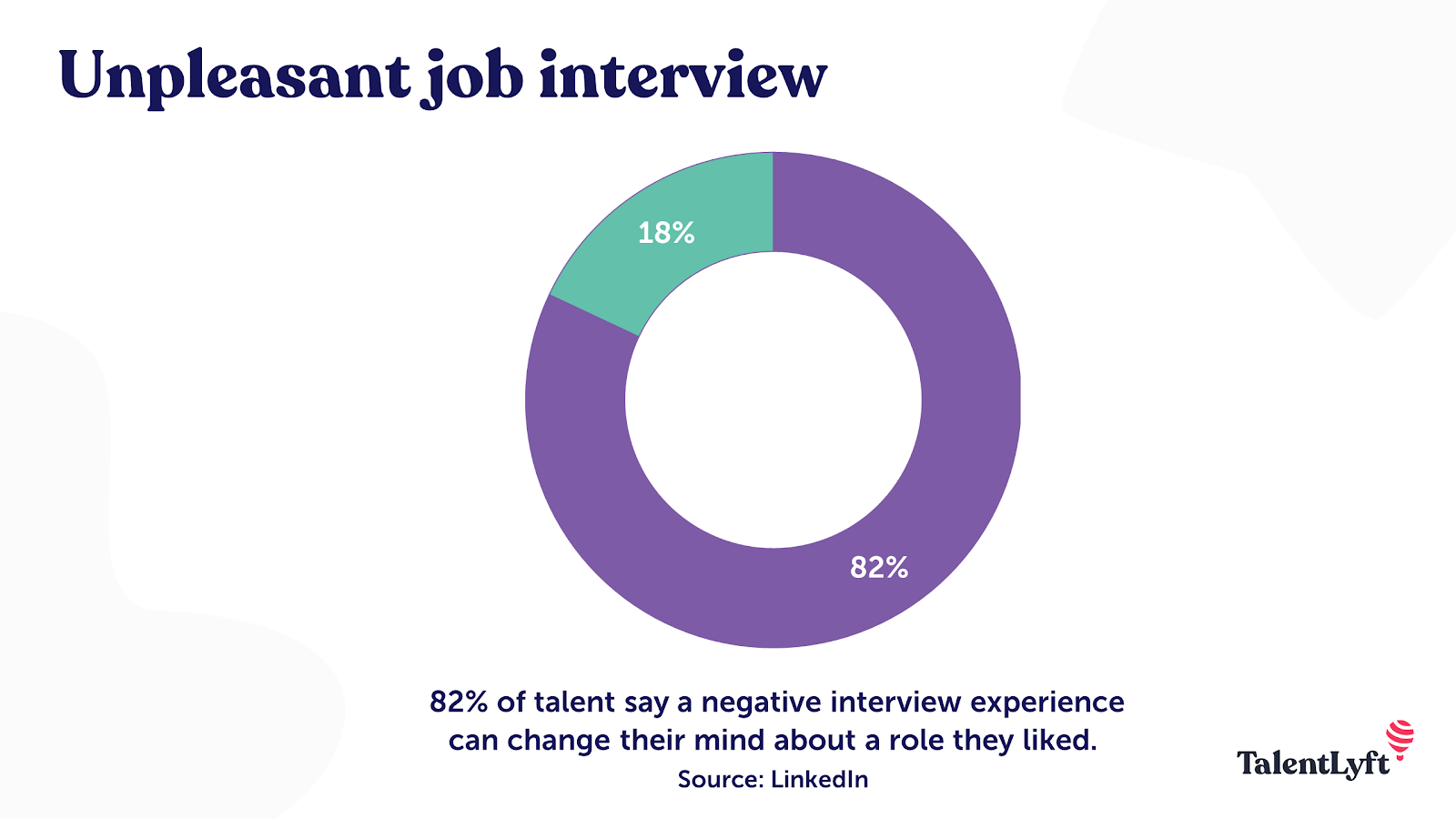
Therefore, the job interview is your greatest chance to win them over - or lose them to your competitors.
💡 If you want to dazzle your candidates, you need to learn how to be a great interviewer who can provide a fantastic, memorable interview experience for your candidates.
Which brings us to our last strategy… 👇
If you want to hire top tech candidates, you need to provide more than just an excellent interview experience.
You need to provide a fantastic candidate experience at each and every step of your candidates’ journey.
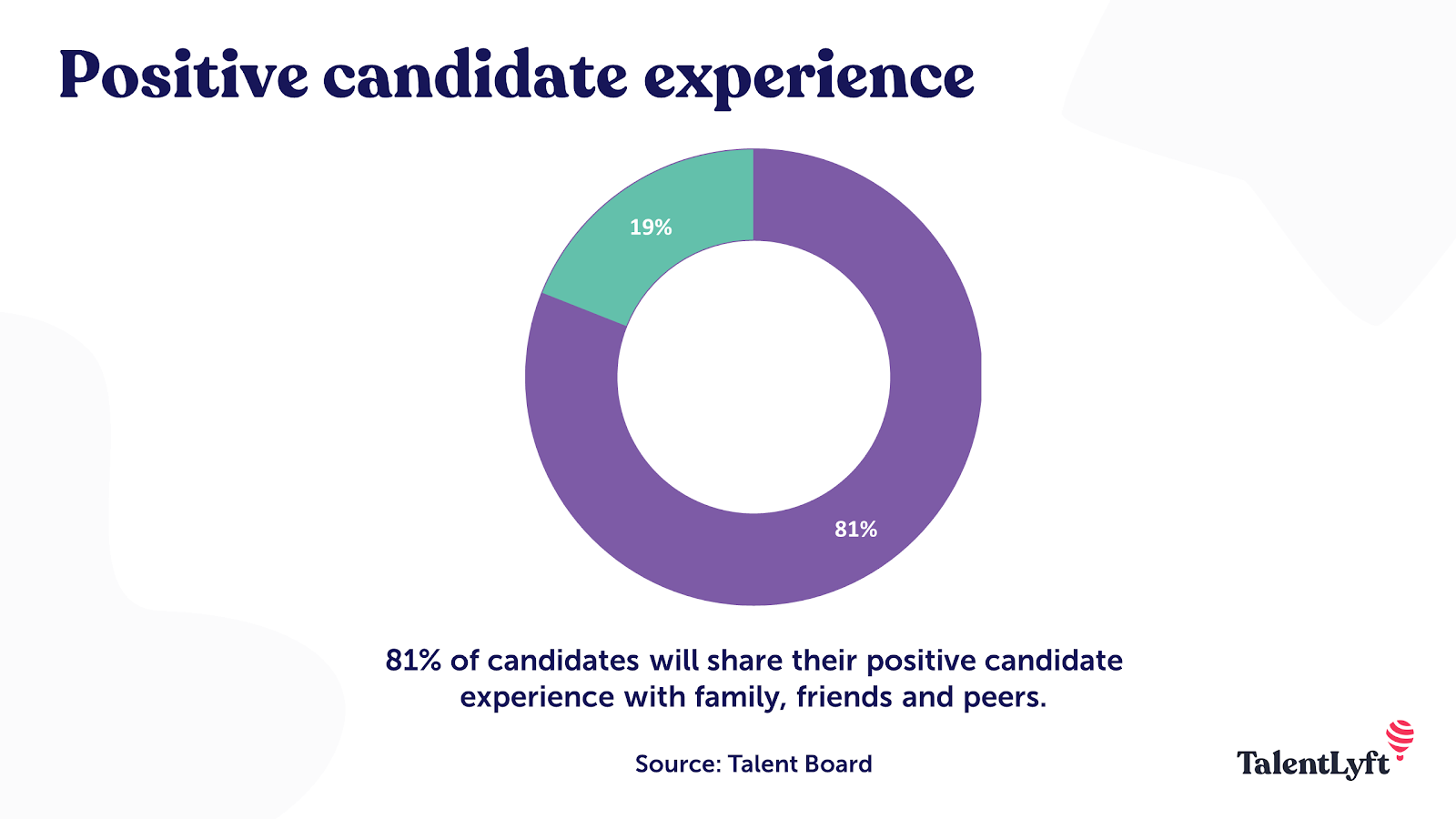
First of all, don’t sit around and wait for great IT talent to apply. Because they won’t. Instead, go out there and find them.
Make your outreach targeted and personal - and you will definitely stand out in a sea of standard messages recruiters usually send.
Once you attract their attention, don’t just invite them to the interview. Instead, go the extra mile. Treat them like they are amazing and hard to get - because they are.
💡 Here are a few ideas to get you creative juices flowing:
Invite them to lunch with your CEO or your technical leadership.
Show them where and with whom they could work.
Introduce them with their potential colleagues (either in person or online)
Give them a (virtual) tour of your office.
➡️ If your company is having trouble recruiting top tech talent, you should reexamine your current hiring process and implement new, innovative strategies.
💡 In this blog post, I have presented 5 most effective recruiting strategies used by top tech companies. You too can implement them and gain a competitive advantage in the current war for tech talent.
So what are you waiting for? 🙂












